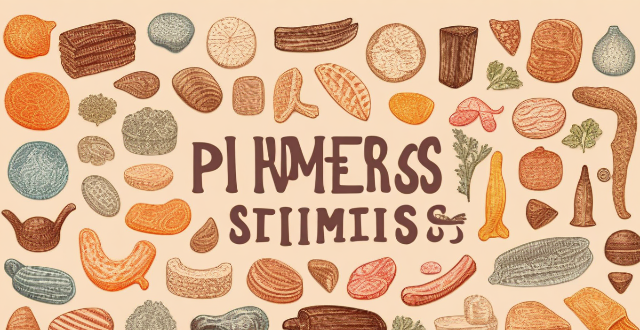Bones Help

Can exercise prevent osteoporosis ?
Exercise plays a crucial role in maintaining healthy bones by increasing bone density and strength. Effective exercises for preventing osteoporosis include weight-bearing exercises, strength training, balance exercises, high-impact exercises, and flexibility exercises. Incorporating these exercises into your routine can help reduce the risk of osteoporosis and maintain strong bones throughout your life.

Can resistance training help improve bone density in older adults ?
Resistance training has been shown to have a positive impact on improving bone density in older adults. This form of exercise strengthens the muscles and bones, reducing the risk of osteoporosis and fractures. To start resistance training, it is important to consult with a doctor, begin slowly, focus on compound movements, incorporate weight-bearing exercises, and seek professional guidance for safety and effectiveness. Consistency is key in achieving optimal results.

Is weight-bearing exercise really necessary for bone health ?
Weight-bearing exercises are often recommended for maintaining bone health, but is it really necessary? Let's explore this topic in detail. Weight-bearing exercises include any activity that requires you to carry your own body weight, such as walking, jogging, dancing, climbing stairs, and weightlifting. These exercises can help strengthen bones and muscles, improve balance and coordination, and reduce the risk of falls. Maintaining healthy bones is crucial for overall health and well-being. Strong bones provide support and protection for your body, allowing you to move with ease and perform daily activities without pain or discomfort. Additionally, having strong bones can help prevent fractures and other injuries. Weight-bearing exercises have numerous benefits on bone health, including stimulating bone growth, improving bone density, reducing the risk of falls and injuries, and promoting overall health and well-being. However, there are some alternatives to weight-bearing exercise that may be beneficial for people who cannot engage in these types of activities. These include resistance training, yoga or Pilates, and swimming. In conclusion, weight-bearing exercises are highly recommended for maintaining bone health due to their numerous benefits on bone growth, density, and overall health and well-being. However, there are alternative exercises that may be beneficial for people who cannot engage in weight-bearing activities. It's always best to consult with a healthcare professional before starting any new exercise program.

How does exercise contribute to bone health ?
Exercise contributes to bone health by increasing bone density, improving balance and coordination, strengthening muscles, improving posture, reducing inflammation, and enhancing cardiovascular health. This reduces the risk of osteoporosis, fractures, back pain, and other health issues.

How often should I exercise to maintain good bone health ?
Exercise is crucial for maintaining good bone health, but the frequency and intensity required vary depending on individual factors. Regular exercise strengthens bones, improves balance, and reduces the risk of falls and fractures. The recommended exercise guidelines for adults are at least 150 minutes of moderate-intensity aerobic exercise per week and two or more days of strength training per week. For older adults, it's important to consult with a healthcare professional before starting any new exercise program. Other factors that impact bone health include diet, smoking, and overall health status.

What types of exercises are best for improving bone density ?
Improving bone density is crucial for maintaining overall health and preventing conditions such as osteoporosis. Engaging in specific types of exercises can significantly enhance bone density, making them an essential component of a healthy lifestyle. Here are some of the best exercises for improving bone density: 1. **Weight-Bearing Exercises**: These activities put stress on the bones, which stimulates them to grow stronger. Examples include walking, jogging, stair climbing, and strength training. 2. **High-Impact Exercises**: These exercises involve jumping or quick, forceful movements that create a significant impact on the bones. Examples include jumping jacks, burpees, box jumps, and plyometrics. 3. **Resistance Training**: This type of training involves using external resistance, such as weights or resistance machines, to challenge the muscles and bones. Key exercises include squats, deadlifts, bench press, and rows. 4. **Isometric Exercises**: While not as directly beneficial for bone density as the previous categories, isometric exercises can still play a role in maintaining and improving overall strength, which contributes to better bone health. Examples include planks, wall sits, and push-up holds. Incorporating a combination of these exercises into your routine can significantly improve bone density over time. It's essential to consult with a healthcare professional before starting any new exercise program, especially if you have pre-existing health conditions or concerns about your bone health.

Can strength training help improve my running performance ?
Strength training is an essential component of any fitness program, including running. It helps to build muscle strength and endurance, which can significantly improve your running performance. Strength training can help increase muscle strength and endurance, improve running economy, reduce the risk of injury, and enhance posture and body alignment. To incorporate strength training into your running routine, start slowly with light weights and gradually increase intensity over time. Choose exercises that target major muscle groups used during running, such as glutes, hamstrings, quadriceps, calves, and core muscles. Incorporate plyometric exercises to improve explosive power and acceleration. Allow sufficient recovery time between sessions to avoid overtraining and potential injuries.

Are there any specific foods or supplements that can help prevent sports injuries ?
There are several foods and supplements that can help prevent sports injuries by promoting overall health and reducing the risk of injury. Foods like fruits, vegetables, whole grains, lean protein sources, and healthy fats provide essential nutrients for building and repairing muscle tissue, supporting immune function, and reducing inflammation. Supplements like vitamin D, calcium, omega-3 fatty acids, glucosamine, and chondroitin can also support bone and joint health and reduce the risk of certain types of injuries. However, it's important to also engage in proper training techniques, warm-up exercises, and wear appropriate protective gear when participating in sports activities.

How can women maintain bone health as they age ?
Maintaining bone health is crucial for women as they age. Here are some tips to help them keep their bones strong and healthy: 1. Get Enough Calcium and Vitamin D: Women should aim to get at least 1,200 milligrams of calcium per day through food sources like dairy products, leafy greens, and fortified foods. Vitamin D helps the body absorb calcium, and it's recommended that women get at least 600-800 IU of vitamin D daily from sunlight, food, or supplements. 2. Engage in Weight-Bearing Exercises: Weight-bearing exercises like walking, jogging, dancing, or lifting weights can help strengthen bones by putting stress on them. This stress signals the body to build more bone, making them stronger over time. Aim for at least 30 minutes of weight-bearing exercise most days of the week. 3. Practice Good Posture and Body Mechanics: Good posture and body mechanics can help prevent fractures by reducing the risk of falls. Stand tall with your shoulders back and your head held high. Use proper body mechanics when lifting heavy objects, bending, or reaching overhead. 4. Quit Smoking and Limit Alcohol Intake: Smoking has been linked to decreased bone density and an increased risk of fractures. If you smoke, consider quitting to improve your bone health. While moderate alcohol consumption may not harm bones, heavy drinking can lead to bone loss. Stick to no more than one drink per day for women. 5. Talk to Your Doctor About Bone Health: As women age, it's important to discuss bone health with a healthcare provider. They may recommend a bone density test to assess your risk of osteoporosis and suggest lifestyle changes or medications if needed. If you have a family history of osteoporosis or other risk factors, your doctor may recommend starting bone-building medications earlier rather than waiting until menopause or later life stages.

Can sports help individuals achieve their personal goals ?
Sports have been an integral part of human civilization for centuries. They are not only a source of entertainment but also serve as a platform for personal growth and development. Many individuals engage in sports to achieve their personal goals, be it physical fitness, mental well-being, or social interaction. One of the most obvious benefits of sports is improved physical health. Engaging in regular physical activity can lead to reduced risk of chronic diseases such as heart disease, diabetes, and obesity, strengthened bones and muscles, improved cardiovascular health, and better sleep quality. Sports can also aid in weight management by burning calories and increasing metabolism, leading to weight loss or maintenance. Engaging in sports can help reduce stress levels by releasing endorphins, which are natural mood boosters. This can lead to improved mood and reduced anxiety, as well as better coping mechanisms for stressors in life. Participating in sports can also boost self-esteem by providing a sense of accomplishment and pride, leading to increased confidence in one's abilities and improved body image and self-worth. Sports often require teamwork and communication, which can help individuals develop these skills outside of the sporting arena. This can lead to improved interpersonal relationships and enhanced leadership abilities. Participating in sports can also provide networking opportunities, allowing individuals to meet new people who share similar interests. This can lead to new friendships and professional connections, as well as an expanded social circle and support system. In conclusion, sports can play a significant role in helping individuals achieve their personal goals. Whether it be physical fitness, mental well-being, or social interaction, sports offer numerous benefits that can positively impact various aspects of one's life. By engaging in sports regularly, individuals can work towards achieving their personal goals while enjoying the many benefits that come with it.

What are the benefits of sports for people with disabilities ?
Sports and physical activities provide numerous benefits for people with disabilities, including improved physical health, mental well-being, and overall quality of life. Engaging in sports can help individuals with disabilities build strength and endurance, improve mobility and coordination, and reduce the risk of injury. Participating in sports can also boost self-esteem and confidence, reduce symptoms of anxiety and depression, and provide opportunities for socialization. Additionally, sports can increase independence, open up access to recreational activities, and enhance overall well-being.

Are there any foods that can help alleviate stress ?
The text provides a summary of foods that can help alleviate stress, including dark chocolate, avocado, blueberries, salmon, and chamomile tea. Each food is explained in terms of its benefits and recommended intake. The article emphasizes that while these foods may help reduce stress levels, they should not be used as a substitute for professional medical advice or treatment.

Does lifting weights help with weight loss ?
Weight loss is a common goal for many people, and weightlifting is one of the most popular methods. However, does lifting weights help with weight loss? This article explores the benefits and drawbacks of weightlifting as a means of weight loss. One of the main benefits of weightlifting is muscle growth, which can lead to an increase in metabolism and help with weight loss. In addition, weightlifting can also help with fat burning and improved cardiovascular health. However, there are also some potential drawbacks to weightlifting, including high initial costs, potential injuries, and a significant time commitment. If you are interested in trying weightlifting as a way to lose weight, make sure you do your research and find a program that fits your needs and lifestyle.

Can ESG principles help mitigate climate change ?
ESG principles, which stand for Environmental, SocialESG principles, which stand for Environmental, Social, have become increasingly important in These principles aim to encourage companies to operate in a more sustainable and socially responsible manner. In this context, it is worth exploring whether these principles can help mitigate climate change. The environmental aspect of ESG focuses on reducing the negative impact of business operations on the environment. This includes reducing greenhouse gas emissions, conserving natural resources, and minimizing waste generation. By promoting these practices, ESG principles can contribute to mitigating climate change in several ways: * Reducing Carbon Emissions: Companies that prioritize environmental sustainability are likely to reduce their carbon footprint by using renewable energy sources, improving energy efficiency, and investing in low-carbon technologies. This can help lower global greenhouse gas emissions, which are a major driver of climate change. * Conserving Natural Resources: By promoting sustainable resource management, ESG principles can help reduce deforestation, protect biodiversity, and conserve water resources. These actions can help maintain the health of ecosystems that play a crucial role in regulating the Earth's climate. * Minimizing Waste Generation: Encouraging companies to adopt circular economy models and reduce waste generation can help reduce the amount of greenhouse gases produced during waste disposal processes. Additionally, recycling and reusing materials can help conserve natural resources and reduce the need for new raw material extraction, further contributing to climate change mitigation. The social aspect of ESG focuses on promoting fair labor practices, human rights, and community involvement. While these principles may not directly address climate change, they can indirectly contribute to mitigating its effects by fostering a sense of corporate responsibility and encouraging companies to invest in their communities. This can lead to increased awareness and action around climate change issues, as well as support for policies and initiatives aimed at addressing the problem. The governance aspect of ESG emphasizes transparency, accountability, and ethical behavior within a company's management structure. By promoting good governance practices, ESG principles can help ensure that companies are held accountable for their environmental impact and are more likely to adopt sustainable business strategies. This can lead to increased transparency around carbon emissions reporting, better alignment between corporate goals and climate objectives, and improved stakeholder engagement on climate-related issues. In conclusion, ESG principles can certainly help mitigate climate change by promoting environmentally sustainable business practices, fostering a sense of corporate responsibility, and ensuring transparency and accountability within companies' management structures. However, it is important to note that these principles alone may not be sufficient to fully address the complex challenges posed by climate change. A comprehensive approach involving government policies, international cooperation, and individual actions will also be necessary to achieve meaningful progress in mitigating the effects of climate change.

Can sport monitoring technology help prevent injuries ?
Sport monitoring technology has become increasingly popular in recent years, with many athletes and coaches using it to improve performance and prevent injuries. This technology includes wearable devices such as fitness trackers, heart rate monitors, and GPS tracking systems, as well as more advanced technologies like motion capture systems and force plates. Sport monitoring technology works by collecting data on an athlete's movements, heart rate, and other physiological factors. This data is then analyzed to provide insights into the athlete's performance and identify areas where they may be at risk of injury. By tracking an athlete's movements and physiological factors, sport monitoring technology can identify potential injury risk factors early on, help coaches create personalized training plans for each athlete based on their individual needs and abilities, monitor recovery periods between sessions, and educate athletes and coaches about injury prevention strategies. Overall, there is evidence to suggest that sport monitoring technology can help prevent injuries in several ways. However, it is important to note that no technology can completely eliminate the risk of injury, and proper training, conditioning, and safety measures should always be prioritized.

What are the best types of exercises for reducing stress and anxiety ?
This article discusses the best types of exercises for reducing stress and anxiety, including cardiovascular exercises like running and cycling, strength training exercises like weightlifting and resistance band training, as well as yoga and meditation. It provides benefits and tips on how to get started for each type of exercise. Incorporating these exercises into your daily routine can help to reduce stress and anxiety, leading to improved overall well-being.

What are the benefits of sports education for children's development ?
Sports education offers a wide range of benefits for children's development, including improved physical fitness, motor skills, cognitive abilities, stress reduction, social skills, self-esteem, emotional regulation, and resilience. These skills are essential for building strong relationships and succeeding in both personal and professional life. By encouraging children to participate in sports activities, parents and educators can help them lead healthier lives and develop life skills that will serve them well into adulthood.

Can exercise help manage symptoms of ADHD ?
Exercise can be a powerful tool in managing symptoms of ADHD by improving focus, reducing impulsivity, increasing energy levels, and promoting better sleep. Choosing the right type of exercise, setting realistic goals, and creating a consistent routine are essential for reaping the full benefits of physical activity for ADHD management.

How does exercise help in managing stress ?
Stress is an inevitable part of life, but regular exercise can help manage it effectively. Exercise releases endorphins, reduces muscle tension, improves sleep quality, boosts self-esteem and confidence, provides a sense of accomplishment, and promotes social interaction. To incorporate exercise into your daily routine, start slowly, find an activity you enjoy, make it a part of your routine, mix up your routine, and don't overexert yourself. By doing so, you can reap the numerous benefits of exercise for stress management and overall well-being.

Can certain foods help reduce inflammation in athletes
Certain foods can help reduce inflammation in athletes. These include anti-inflammatory spices, fruits and vegetables, whole grains, healthy fats, and protein. It's also important to avoid processed foods, sugary drinks, and red meat. By eating a balanced diet full of healthy foods, athletes can reduce inflammation and improve their performance.

Can engaging in sports help with weight management ?
Engaging in sports can help with weight management by increasing calorie burn, improving metabolism, increasing muscle mass, reducing the risk of obesity-related diseases, and providing mental health benefits. However, a healthy diet and lifestyle habits are also essential for long-term success.

Can physical therapy help with sports injury recovery ?
Physical therapy is beneficial for sports injury recovery, addressPhysical therapy is beneficial for sports injury recovery, address restoration, injury prevention, and addressing pain management, function restoration, injury prevention, and supporting a safe return to activity. It involves assessment, diagnosis, manual therapy, range of motion exercises, strengthening exercises, stretching, balance training, functional training, gradual increase in activity, and education on injury prevention and home exercise programs.

Can team sports help in coping with pressure ?
Team sports can help cope with pressure by developing resilience, building confidence, providing supportive networks, and teaching time management.

How do school sports programs influence the physical activity levels of teenagers ?
School sports programs have a significant impact on the physical activity levels of teenagers. They encourage regular exercise and help develop essential life skills such as teamwork, communication, and leadership. These skills are valuable in personal and professional settings. School sports programs also play a vital role in building healthy habits among teenagers by promoting proper nutrition, rest, and recovery. Finally, school sports programs provide opportunities for personal growth and development through challenging physical and mental activities. Overall, school sports programs help teenagers lead active and fulfilling lives both inside and outside of the classroom.

How can technology help in managing a sports career ?
Technology plays a crucial role in managing a sports career. It can help athletes improve their performance, track their progress, and stay connected with their fans and sponsors. Here are some ways technology can assist in managing a sports career: 1. Performance Tracking: Wearable devices such as fitness trackers, smartwatches, and heart rate monitors can help athletes track their physical activity, sleep patterns, and overall health. Video analysis software allows coaches and athletes to review game footage, identify areas for improvement, and develop strategies for future competitions. 2. Training Optimization: Virtual Reality (VR) technology can simulate various environments and scenarios, allowing athletes to train in a controlled setting without the risk of injury. Machine learning algorithms can analyze an athlete's training data and provide personalized recommendations for improving performance and reducing the risk of injury. 3. Injury Prevention and Recovery: Biometric data such as heart rate variability, muscle oxygenation, and fatigue levels can help coaches and trainers monitor an athlete's recovery status and adjust their training accordingly. Technological advancements in rehabilitation, such as electrotherapy, ultrasound therapy, and robotic assistance, can aid in faster recovery from injuries. 4. Nutrition and Hydration: Smart water bottles can track an athlete's hydration levels throughout the day and remind them when it's time to drink water. Nutrition apps can help athletes plan their meals, track their calorie intake, and ensure they are getting the necessary nutrients for optimal performance. 5. Communication and Networking: Social media platforms allow athletes to connect with fans, share their experiences, and promote their personal brand. Sports management software can help athletes manage their schedules, communicate with coaches and teammates, and keep track of their finances and sponsorships. 6. Mental Health Support: Mindfulness apps can help athletes manage stress, improve focus, and enhance their mental well-being. Teletherapy services enable athletes to access mental health support remotely, ensuring they have the resources needed to maintain their mental health while on the road or competing abroad.

How does technology help in preventing and managing sports injuries ?
Technology plays a crucial role in preventing and managing sports injuries through wearable devices, advanced imaging techniques, rehabilitation technologies, and preventive measures such as biomechanical analysis and nutrition tracking. These tools help athletes maintain optimal health and minimize their risk of injuries.

How does stretching help with recovery after a workout ?
Stretching is crucial for recovery after a workout. It improves blood circulation, reduces muscle soreness and stiffness, enhances flexibility, promotes better range of motion, prevents injury, and reduces stress. Incorporating stretching into your post-workout routine can greatly enhance your recovery process.

How can team sports help in individual skill development ?
Team sports contribute significantly to individual skill development by improving communication skills, enhancing leadership abilities, increasing self-confidence, bettering time management, improving social skills, promoting physical fitness and coordination, providing opportunities to learn from mistakes, and fostering adaptability.